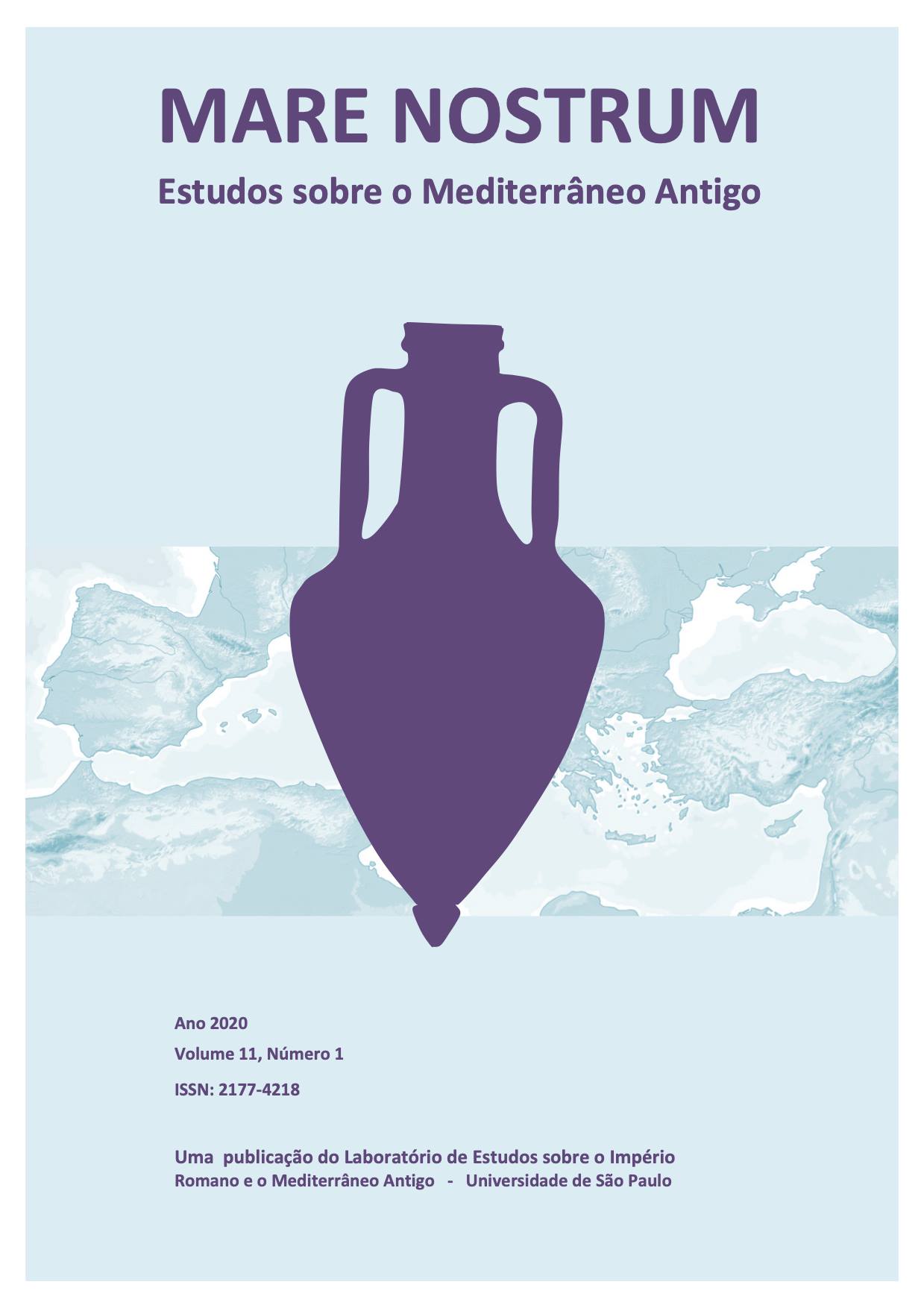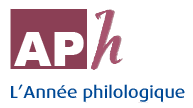Back to fragment 31: translation, Gender and Sexuality
DOI:
https://doi.org/10.11606/issn.2177-4218.v11i1p131-157Keywords:
Sappho of Lesbos, translation, gender, sexualityAbstract
The purpose of this article is to reappraise one of the most famous Sappho's songs (VIII–VII BCE), the fragment 31, focusing on two precise aspects: the gender marks of the poetic voice and that of the characters portrayed by this voice in intersection with the perspectives of reading related to the manifestations of érōs expressed in this composition. To argue for the importance of the above aspects, I make a brief comment about some of the most frequent directions of interpretation of this fragment, as well as present and comment on two of its translations, made in French. Finally, and to the same end, I present and comment on five recent Brazilian translations.
Downloads
References
Bagagli. B. P. (2018). A lesbiandade e travestilidade poéticas de Raíssa Éris Grimm –de Safo à Monique Wittig.Recuperado em 2020-04-28, de: https://medium.com/@biapagliarinibagagli/a-lesbiandade-e-travestilidade-po%C3%A9ticas-de-ra%C3%ADssa-%C3%A9ris-grimm-de-safo-%C3%A0-monique-wittig-db4d072c5e4c.
Barbosa, T. V. R. (2017). Safo 31 Voigt –uma tradução. Revista Contextura, 10, 7–15. http://orcid.org/0000-0001-8449-0411.
Barbosa, T. V. R. (2018). Safo 31 Voigt –mil traduções e mais uma. Revista da Anpoll, 44(1), 231–245. http://dx.doi.org/10.18309/anp.v1i44.1142.
Barra-Salzédo, E. (2019, janeiro). Une nouvelle interprétation du fr. 31 de Sappho ou Pour une Sappho“anthropologiquement correcte”. Conferência apresentada no Séminaire “Anthropologie religieuse de la Méditerranée ancienne”,ANHIMA.
Boehringer, S. (2007). L’Homosexualité féminine dans l’Antiquité grecque et romaine. Les Belles Lettres.
Boehringer, S. & Calame, C. (2019). Sappho au début du XXIesiècle: genre et poésie érotique. Mètis, 17, 121–143.
Bowra, C. M. (Ed.). (1936)Greek Lyric Poetryfrom Alcman to Simonides.Clarendon Press.
Brunet, P. (1998). L’égal de dieux. Cent versions d’un poème de Sappho. Allia.
Calame, C. (1996). L’éros dans la Grèce Antique. Belin.DeJean, J. (1989). Fictions of Sappho, 1546–1937. The University of Chicago Press.
Devereux, G. (1970). The nature of Sappho’s seizure in Fr. 31 LP as evidence of her inversion. The Classical Quarterly, 20 (1), 17–31. Retrieved from www.jstor.org/stable/637501.
Fabre-Serris, J. (2016). Anne Dacier (1681), Renée Vivien (1903): Or What Does it mean for a Woman to Translate Sappho? In E Hall & Wyles, R. (Eds.), Women Classical Scholars: Unsealing the Fountain from the Renaissance to Jacqueline de Romilly (pp. 78–102.). Oxford University Press.
Flores, G. G. (2017). Safo:fragmentos completos. Editora 34.
Fontes, J. B. (2003a). Eros tecelão de mitos. A poesia de Safo de Lesbos. (2ª ed.). Iluminuras.
Fontes, J. B. (2003b). Safo de Lesbos: poemas e fragmentos. Iluminuras.
Gacon, F.(1712). Les odes d’Anacréon et de Sapho en vers français, par le poète sans fard.Fritsh et Böhm. Recuperado em 2019-12-15, de: http://books.google.com.
Gripp, B. S. (2015).A antiga lira lésbia: resquícos indo-europeus na poesia de Safo e Alceu. Tese de Doutorado, Faculdade de Filosofia, Letras e Ciências Humanas, Universidade de São Paulo, São Paulo. doi:10.11606/T.8.2015.tde-19102015-135721. Recuperado em 2019-12-22, de www.teses.usp.br.
Halperin, D. M. (2002). The First Homosexuality? In D. M. Halperin. How to do the History of Homosexuality. (pp. 48–80). The University of Chicago Press.
Krief, H. (Ed.). (2006). La Sapho des Lumières:anthologie établie et présentée par Huguette Krief. Publications de L’Université de Saint-Étienne.
Lardinois, A. (1995). Safo lésbica e Safo de Lesbos (C. K. Moreira, Trad.). In Bremmer, J.(Org.). De Safo a Sade:momentos na história da sexualidade (pp. 27–50). Papirus. (Trabalho originalmente publicado em 1991)
Lardinois, A. (1996). Who sang Sappho’s song? In Greene, E. (Ed.), Reading Sappho:contemporary approaches (pp. 150–172). University of California Press.
Lobel, E. & Page, D. (Eds.). (1955). Poetarum Lesbiorum Fragmenta. Clarendon Press.
Longino. (1996). Do sublime(F. Hirata, Trad.). Martins Fontes.
Malta, A. (2018). Re-Visãodo amor em Safo ou Safo para além de Safo. Anais de Filosofia Clássica, 12(23), 96–106. www.revistas.ufrj.br/index.php/FilosofiaClassica/article/view/9448.
Marks, E. (1979). Lesbian Intertextuality. In Marks, E. & Stambolian, G. (Eds.), Homosexualities and French Literature (pp. 353–377). Cornell University Press.Nagy, G. (1996). Phaethon, Sappho’s Phaon and the White Rock of Leukas: “Reading” the Symbols of Greek Lyric. In Greene E. (Ed.), Reading Sappho:contemporary approaches(pp. 35–57). University of California Press.
Mare Nostrum, ano 2020, v. 11, n. 1.
Race, W. H. (1983). “That Man” in Sappho fr. 31 L–P. Classical Antiquity, 2 (1), 92–101.Retrieved from www.jstor.org/stable/25010785.
Ragusa, G. (2005). Fragmentos de uma deusa:a representação de Afrodite na lírica de Safo. Editora de Unicamp.
Ragusa, G. (2014). Lira grega:antologia de poesia arcaica, 9 poetas e suas canções. Hedra.
Ragusa, G. (2019). Safo de Lesbos –De liras e neblinas. In Rede, M. (org.). Vidas antigas: ensaios biográficos da Antiguidade (pp. 211–238). Intermeios.
Scott, J. (1995). Gênero: uma categoria útil de análise histórica. Educação & Realidade, 20(2), 71–99. https://seer.ufrgs.br/educacaoerealidade/article/view/71721/40667. (Trabalho originalmente publicado em 1988
Sebillotte–Cuchet, V. (2012). Régimes de genre et Antiquité grecque classique (Ve–IVe siècles av. J.–C.).Annales. Histoire, Sciences Sociales, 67(3), 573–603. doi:10.3917/anna.673.0573.
Snell, B. (1931). Sappho’s Gedicht φαίνεταίμοικῆνος. Hermes, 66, 71–90.
Snyder, J. M. (1997). Lesbian desire in the lyrics of Sappho. Columbia University Press.
Ugolini, G. & Setti, A. (Eds.). (1951).Lirici greci. Felice le Monnier.
Vivien, R. (1903). Sapho, traduction nouvelle avec le texte grec. Alphonse Lemerre.
Voigt, E.–M. (éd.). (1971). Sappho et Alcaeus: fragmenta. Athenaeum, Polak & Van–Gennep.
Wilamowitz–Moellendorff. U. von. (1913). Sappho und Simonides, Untersuchungen über griechische Lyriker.Weidmann.
Downloads
Published
Issue
Section
License
Copyright (c) 2020 Letticia Batista Rodrigues Leite

This work is licensed under a Creative Commons Attribution 4.0 International License.
Responsibility for the content published by Mare Nostrum rests exclusively with the author(s) of such content.
The reproduction of the texts published by Mare Nostrum is licensed according to Creative Commons license Attribution-NonCommercial 4.0 International (CC BY-NC).
Authors who publish with this journal agree to the following terms:
- Authors retain copyright and grant the journal right of first publication with the work simultaneously licensed under a Creative Commons Attribution License that allows others to share the work with an acknowledgement of the work's authorship and initial publication in this journal.
- Authors are able to enter into separate, additional contractual arrangements for the non-exclusive distribution of the journal's published version of the work (e.g., post it to an institutional repository or publish it in a book), with an acknowledgement of its initial publication in this journal.
- Authors are permitted and encouraged to post their work online (e.g., in institutional repositories or on their website) prior to and during the submission process, as it can lead to productive exchanges, as well as earlier and greater citation of published work (See The Effect of Open Access).









